 Society
Society

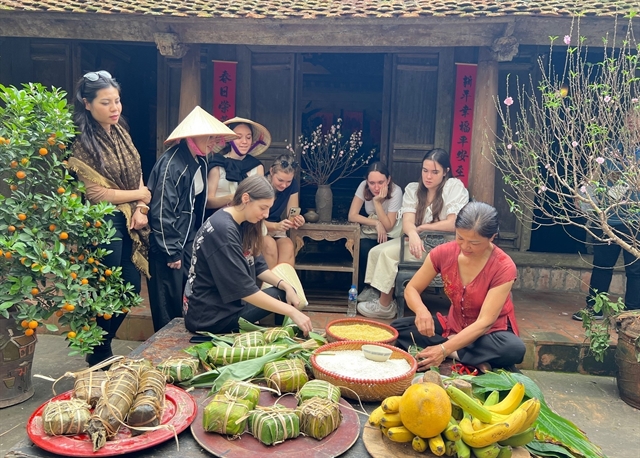 |
| Foreign visitors participate in making bánh chưng (traditional sticky rice cake) in Duong Lam Ancient Village, Son Tay Town (Hanoi). |
With its rich cultural heritage, deep historical traditions, and diverse rural ecosystem, Hanoi is steadily advancing its vision of rural tourism development in alignment with the new rural development program. This initiative aims to cultivate sustainable, harmonious tourism that embodies the unique character of the Capital.
Following the Prime Minister’s issuance of Decision No 922/QĐ-TTg in August 2022—approving the Programme for the Development of Rural Tourism under the New-Style Rural Development Programme for the 2021–2025 Period—Hanoi’s suburban districts have actively developed tourism offerings that highlight agriculture, traditional crafts, and local culture. Notable examples include: experiential tourism in Bat Trang Pottery Village (Gia Lam District), community-based tourism in Duong Lam Ancient Village (Son Tay Town), eco-tourism in Vinh Ngoc Commune (Dong Anh District), and agri-tourism combined with resort services in Dan Phuong District.
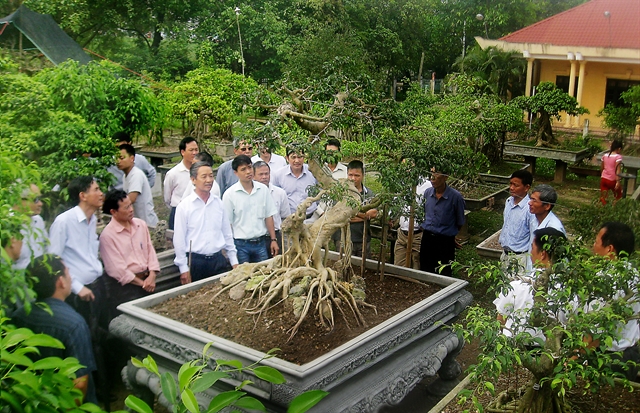 |
| Formerly an agricultural commune, Hong Van (Thuong Tin District) has become a hub for ornamental plant crafts and tourism, drawing tens of thousands of visitors each year. |
To date, Hanoi has recognized 42 city-level tourist destinations, 21 of which integrate agricultural and rural assets in alignment with new rural development initiatives. Notable examples include: Duong Xa and Phu Dong (Gia Lam District), Thuy Ung horn comb craft village and Van Diem luxury woodcraft village (Thuong Tin District), Dai Ang and Yen My tourism sites (Thanh Tri District), and Long Ho in Kim Son Commune (Son Tay Town).
The city has also introduced its first two 4-star OCOP (One Commune One Product) tourism offerings in the category of community-based tourism, eco-tourism, and rural attractions: Hong Van Countryside Tourism Site (Hong Van Commune, Thuong Tin District), and Phu Dong Green Park Ecological Area (Phu Dong Commune, Gia Lam District).
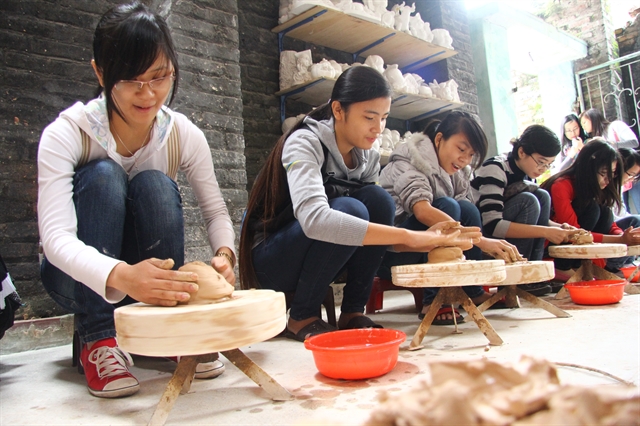 |
| In recent years, Hanoi’s suburban districts have actively developed rural tourism models, such as experiential tourism in Bat Trang Pottery Village (Gia Lam District). |
Other notable rural tourism destinations include the Huong Son Scenic Complex (My Duc District), Duong Lam Ancient Village (Son Tay Town), and various farm-tourism models such as White Goat Farm and Countryside Farm in Ba Vi District. Additionally, Hanoi's renowned craft villages continue to attract both domestic and international visitors, showcasing traditional artistry and heritage.
According to Mr. Ngo Van Ngon, Deputy Chief of the Standing Office of the Hanoi New-Style Rural Development Programme Coordination Office: "Rural tourism is not just a new direction for economic development; it also provides an opportunity to preserve cultural heritage and natural landscapes in alignment with new rural development goals. In many localities, people have transitioned from traditional farming to tourism services, leading to higher incomes and improved living standards."
He noted that several advanced and model new-style rural communes in Hanoi have successfully capitalised on rural tourism as a means of growth. For instance, Hong Van Commune (Thuong Tin District), once primarily agricultural, has transformed into a craft village specialising in ornamental plants, integrating tourism services. Thanks to this innovative model, Hong Van now attracts tens of thousands of domestic and international visitors annually, providing stable incomes for many local households.
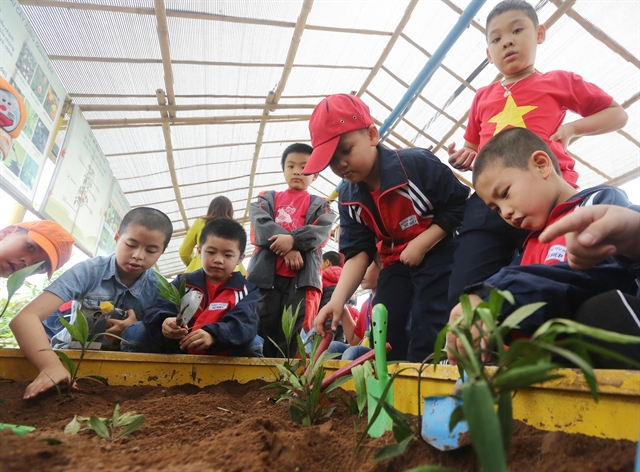 |
| Canh Buom Xanh Ecotourism Site in Ninh Hiep Commune (Gia Lam District) is more than a recreational park—it offers an engaging learning environment for children. |
Recognised in 2006 as Vietnam’s first ancient village designated a National Historical and Cultural Site, Duong Lam Village has embraced tourism as a vital part of community life. Residents actively welcome visitors, offering traditional meals and showcasing local handicrafts.
Mr. Pham Van Xuyen, a local engaged in community tourism, said: "In the past, we had idle time after farm work. Now, tourists come regularly. We’ve renovated our home to welcome guests, gaining a steady income while preserving our ancestral traditions."
In Vinh Ngoc Commune (Dong Anh District), a key area in Hanoi’s rural development plan focused on organic agriculture and eco-tourism, Vu Van Luc has pioneered a successful model combining Ha Den black grape cultivation with tourism. "The riverside land is only suitable for vegetables and fruit trees, which aren’t very profitable on their own," he explained.
Since 2020, he has leased more than four hectares of fertile land along the Red River to grow grapes and create an interactive tourism experience. "Currently, grapes sell for VND50,000 to 180,000/kg. Visitors who come to pick grapes directly at the farm pay up to VND200,000/kg, which includes entrance and photography. The two main harvest seasons—from May to July and October to December—are also the peak times for tourist visits," he added.
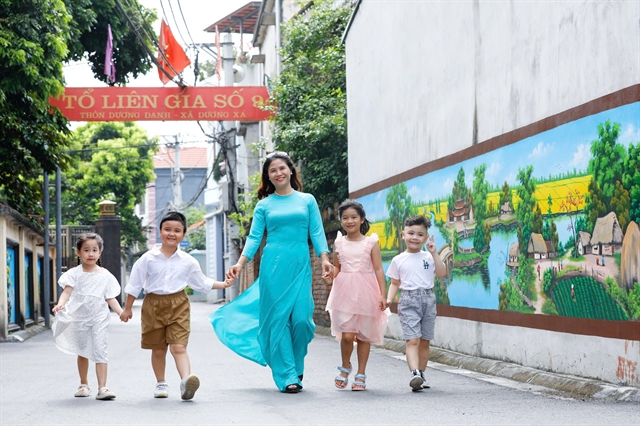 |
| Developing rural tourism in parallel with new rural development is a sustainable solution to preserving cultural values, improving residents' lives, and enriching Hanoi’s tourism offerings. |
Mr. Nguyen Xuan Dai, Director of the Hanoi Department of Agriculture and Environment and Chief of the Coordination Office for the New Rural Development Program, emphasised that on March 17, 2021, the Hanoi Party Committee (17th term) issued Programme No 04-CTr/TU. This programme aims to effectively implement the national target programme on “New-Style Rural Development in association with Agricultural Restructuring and Rural Economic Development to Improve Farmers’ Lives for the 2021–2025 Period”. A key objective is to promote and highlight Hanoi’s unique rural and agricultural tourism offerings.
Building on this, on March 4, 2022, the Hanoi People’s Committee issued Plan No. 73/KH-UBND to guide the development of the agricultural and rural tourism economy in alignment with new rural development for the 2022–2025 period.
Mr. Dai affirmed: "Rural tourism linked to new rural development is a sustainable strategy that preserves cultural values, improves quality of life, and diversifies the capital city’s tourism portfolio. With coordinated efforts from authorities, communities, and businesses, Hanoi is well-positioned to transform its peaceful countryside into attractive, culturally rich destinations that bring lasting community value." VNS
The article is published under the coordination of the Coordination Office of the New-Style Rural Development Programme in Hà Nội.




